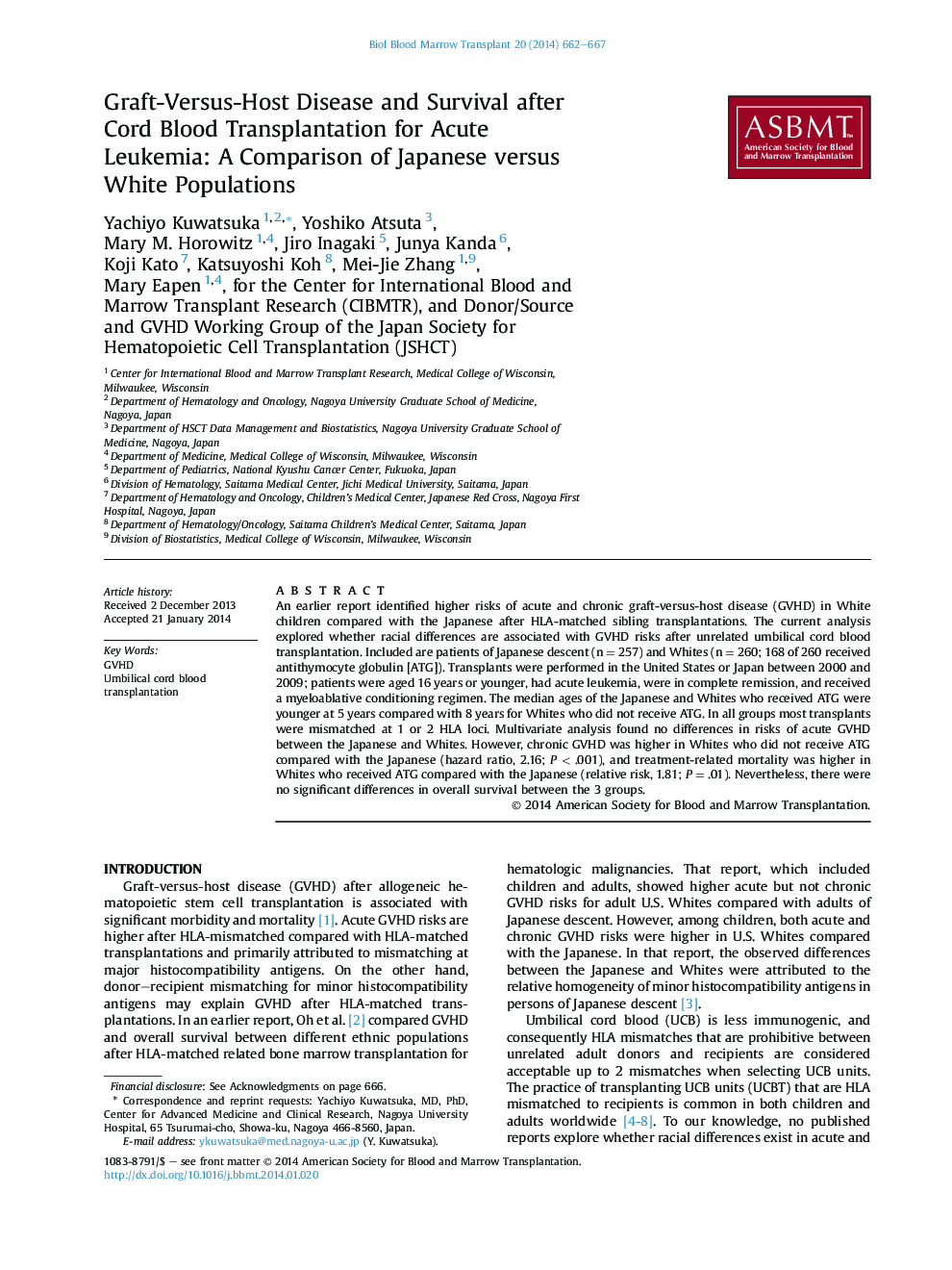| کد مقاله | کد نشریه | سال انتشار | مقاله انگلیسی | نسخه تمام متن |
|---|---|---|---|---|
| 2102079 | 1546280 | 2014 | 6 صفحه PDF | دانلود رایگان |
An earlier report identified higher risks of acute and chronic graft-versus-host disease (GVHD) in White children compared with the Japanese after HLA-matched sibling transplantations. The current analysis explored whether racial differences are associated with GVHD risks after unrelated umbilical cord blood transplantation. Included are patients of Japanese descent (n = 257) and Whites (n = 260; 168 of 260 received antithymocyte globulin [ATG]). Transplants were performed in the United States or Japan between 2000 and 2009; patients were aged 16 years or younger, had acute leukemia, were in complete remission, and received a myeloablative conditioning regimen. The median ages of the Japanese and Whites who received ATG were younger at 5 years compared with 8 years for Whites who did not receive ATG. In all groups most transplants were mismatched at 1 or 2 HLA loci. Multivariate analysis found no differences in risks of acute GVHD between the Japanese and Whites. However, chronic GVHD was higher in Whites who did not receive ATG compared with the Japanese (hazard ratio, 2.16; P < .001), and treatment-related mortality was higher in Whites who received ATG compared with the Japanese (relative risk, 1.81; P = .01). Nevertheless, there were no significant differences in overall survival between the 3 groups.
Journal: - Volume 20, Issue 5, May 2014, Pages 662–667
